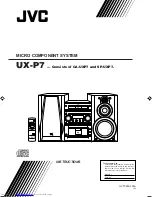
SX-200 General Information Guide
136
Revision A
50003510
up to a maximum of 10 digits in length. By default, ANI and DNIS numbers are not recorded in
SMDR reports.
Automatic Number Identification (ANI) on Outgoing Trunks
This feature is a mechanism that allows the system to identify a calling party on an outgoing
trunk. The identifying information consists of the calling party’s extension number which is
transmitted (tones or pulses) on the trunk, after the system has successfully dialed an external
number on that trunk.
Automatic Route Selection (ARS)
The ARS feature is part of the system software package. It automatically selects one of a
preprogrammed (programmed during CDE) list of trunk routes every time an outgoing call is
made. The routes are selected based upon the digits dialed, in order of cost (i.e., least expensive
route first), and in accordance with the caller’s toll restriction. The use of digit analysis and digit
modification within the ARS package allows the system to recognize and modify any digit string
which is dialed by the user, alleviating the need for the user to dial special trunk access codes,
or to dial a different digit string for each of the various routes to the same destination.
The complete ARS package provides the following:
•
Alternative Routing
- automatically selects an alternate trunk route when the first choice
is busy. Routes (e.g., tie trunks or WATS lines) are preprogrammed in an implied sequence
of selection within the Route Lists Table.
•
Least Cost Routing
- enables the customer to capitalize on the cost benefits offered by
each type of trunk by allowing the installation company to define, via the Route Plans and
Route Lists Tables, the order in which the trunk groups are to be selected.
•
Toll Control
- allows the customer to restrict user access to specific trunk routes and/or
specific directory numbers.
•
Overlap Outpulsing
- seizes a trunk and commences outpulsing as soon as sufficient
digits have been received to identify the route.
•
Expensive Route Warning
- presents a tone to the user during call setup, and, if a
SUPERSET 420, SUPERSET 430, SUPERSET 4015, SUPERSET 4025, SUPERSET
4125, SUPERSET 4090, or SUPERSET 4150 telephone is used, the message EXPEN-
SIVE ROUTE appears on the LCD when the route selected by ARS is programmed as an
expensive route.
•
Callback Queueing
- allows the user who encounters busy tone after dialing an ARS digit
string (i.e., all trunks busy) to dial a callback access code, or, if a SUPERSET 420, SU-
PERSET 430, SUPERSET 4015, SUPERSET 4025, SUPERSET 4125,SUPERSET 4090,
or SUPERSET 4150 telephone is used, to select CALLBACK, and be placed in a queue
for the first available trunk.
•
Camp-on Queueing
- allows the user who encounters busy tone after dialing an ARS
digit string (i.e., all trunks busy) to wait off-hook, or, if a SUPERSET 420, SUPERSET 430,
SUPERSET 4015, SUPERSET 4025, SUPERSET 4125, SUPERSET 4090, or SUPER-
SET 4150 telephone is used, to select CAMP ON and remain off-hook until a trunk
becomes free.
Summary of Contents for SX-2000 EL
Page 1: ...GENERAL INFORMATION GUIDE LIGHTWARE 19 RELEASE 3 1 ...
Page 14: ...xiv Revision A 50003510 SX 200 General Information Guide ...
Page 34: ...SX 200 General Information Guide 20 Revision A 50003510 ...
Page 61: ...Configuration 50003510 Revision A 47 SX 200 ML Configuration Example ...
Page 114: ...SX 200 General Information Guide 100 Revision A 50003510 ...
Page 214: ...SX 200 General Information Guide 200 Revision A 50003510 ...
Page 226: ...SX 200 General Information Guide 212 Revision A 50003510 ...
Page 257: ...Glossary of Terms 50003510 Revision A 243 NOTES ...
















































